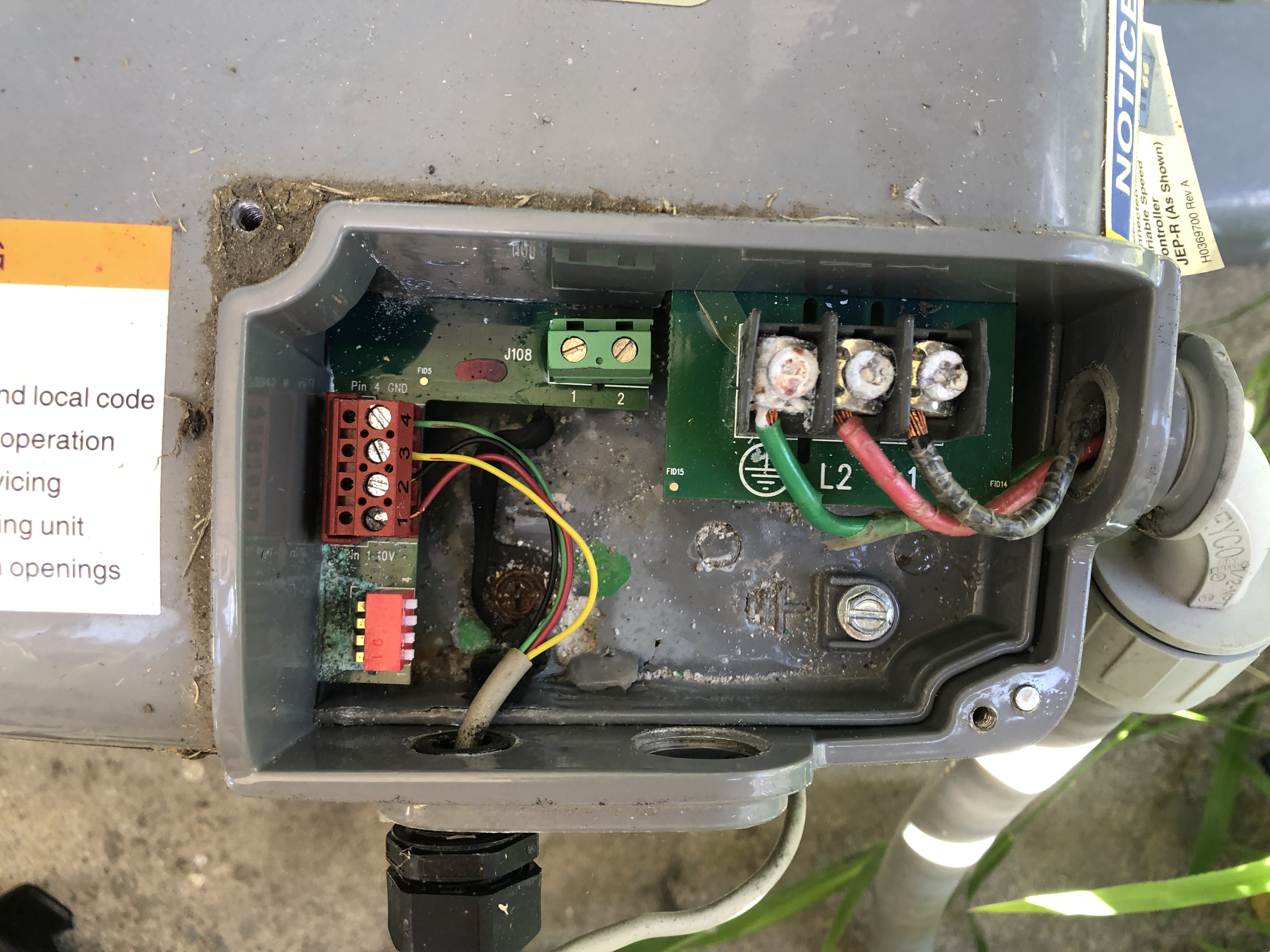On a V-Green motor the installer has to run a small wire from the electrical ground terminal to the case ground inside the drive.
If this is important, why isn't it done at the factory?
Does the manufacturer provide this information anywhere?
The drive is secured to the metal frame with metal screws. So, it seems that the drive would be sufficiently grounded.
The problem is due to a voltage difference between the motor shaft and frame, which causes a discharge that has to go through the bearings unless there is some sort of device used to ground the rotating shaft.
I don't know what different manufacturers use for bearings or shaft grounding.
I don't know how common bearing damage is due to current vs water from a shaft leak.
All pumps should be bonded and grounded in any case.
Maybe a lack of bonding and grounding would cause some problems, but I don't see how it would increase bearing damage from shaft currents discharging through the bearings.
A lack of bonding and grounding might cause a buildup of static charge on the motor frame which might be dangerous, but that's just speculation.
If there was no bond or ground, the case would likely build up a voltage closer to the shaft voltage, which would reduce shaft to frame current, but this would likely create additional problems and probably safety issues if the case built up a dangerous level of voltage.


